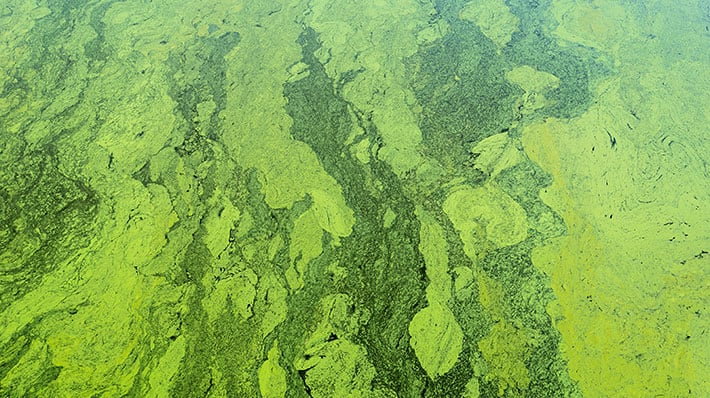
If you are planning to set up a rainwater harvesting or storage system, the presence of algae is something you need to consider. Algae growth in water tanks can be a significant issue, which may cause harm to humans, pets and plants that consume or come in contact with the water. In this post, I will go over the effects of algae-contaminated water on humans, pets, and plants.
In hot climates, the risk of algae growing in your water tank is high. Algae thrive in places with sunlight and warmth. If your water tank is not completely dark inside, it will create the perfect conditions for algae to grow. In case this should happen, let’s look at how algae actually affect humans, pets, and plants.
Effects of Algae on Humans
Water that has been contaminated by algae has adverse effects on humans.
- Algae-affected water is unsuitable for drinking because it will affect the taste and quality of drinking water. Water that has been contaminated by algae will have a putrid smell and the water will turn either green or blue-green in color.
- Some algae species like blue-green algae produce harmful toxins. When the toxins are consumed or inhaled, they cause skin irritation, mild respiratory effects, and hayfever-like symptoms.
Effects of Algae on Pets
If you use the water stored in your tank for household use, you probably wash and feed your pets with it. Like humans, your pets will react to the contaminated water as well.
- If pets drink or bathe with the algae-affected water, it can poison them. The effects of algae-contaminated water can include skin rashes, neurological problems, liver damage, and other fatal conditions in animals like dogs and cats.
- For pets like fish and turtles, algae blooms in water tanks can be fatal. When blooms of algae die in water, they produce an odor that leads to oxygen deprivation. For animals who live in the water, oxygen deprivation due to algae can cause death.
Effects of Algae on Plants
Algae contamination can also affect plants and plant growth.
- Algae can harm plants by stunting their growth. Using algae-affected water for irrigation can also affect the quality and appearance of plants. The algae in the water absorb the nutrients meant for the plants, which will starve the plants for the food they need.
- If you water plants with algae-affected water, you also make anything that comes into contact with the plants vulnerable to the harmful algae and toxins it produces.
Can You Prevent Algae Growth?
Yes, there are a few simple ways to avoid algae growth in your tank. As you will find in our post on eliminating algae growth in your water tank, a few of the best options are:
- Use an opaque water storage tank.
- Use bleach in your water tank.
- Use chlorine in your water tank (as an alternative to bleach).
I hope this post helps you understand the risk of allowing algae to grow in your water storage and the true effects it has on humans, pets, and plants. If you have any questions, please feel free to comment below!

